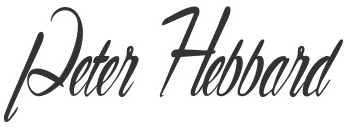Ultrasound-Guided Procedures in Anaesthesia
Hebbard, Barrington & Royse
www.heartweb.com.au
Axillary Block
Using ultrasound guidance the musculocutaneous, radial, median, ulnar and medial cutaneous nerves of the forearm can be reliably anaesthetised. At this level, the terminal branches of the brachial plexus begin to take on the more fasciculated appearance typical of peripheral nerves. Ultrasound visualisation of the needle is enhanced by the relatively superficial path to the nerves. The axillary plexus and the more peripheral nerves are good first blocks for those new to ultrasound techniques. The needle insertion may be performed across plane or in-plane, a perpendicular approach is also possible. Care must be taken to locate each individual nerve.

Fig 2.27 Diagram of the cross-sectional anatomy of the axillary brachial plexus
A common technique is an in-plane approach with the axillary vessels, nerves and muscles in short axis using a nerve stimulator to confirm the identity of nerves. The probe is placed transversely in the axilla of the abducted arm as for a nonultrasound guided axillary block. Pie graphs have been constructed to approximate the usual positions of the nerves relative to the artery however variability is common.
On placing the ultrasound probe on the axilla the artery is first located. A very useful landmark deep to the artery and high in the axilla is the muscle body of teres major and overlying tendon of latissimus dorsi, best seen when the arm is abducted and externally rotated. The radial nerve is always found superficial to this muscle and tendon.

Fig 2.28 Relationship of brachial plexus tolatissimus dorsi tendon and coracobrachialis.
Ultrasound-Guided Procedures in Anaesthesia
Hebbard, Barrington & Royse
www.heartweb.com.au

Fig 2.29 Sonogram of axillary brachial plexus. The nerves as identified were traced by short-axis sliding and are in typical positions. The presence of oflatissimus dorsi tendon means the radial nerve will still be close to the artery. Musculocutaneous nerve is only just starting to pierce brachioradialis. The anatomy will probably become clearer after some solution is put in. It is particularly important to avoid bubbles which will impair the view
The radial nerve can be more challenging to see and often has a slower onset of anaesthesia than the other nerves. This may be due to the depth of the radial nerve and its variable position. Often there is a hyperechoic structure immediately deep to the axillary artery, which may be the radial nerve but is often artefact. The position of the radial nerve has the most variability in relation to both the pie chart and distance from the artery. It may be located between the artery and ulnar nerve but is usually deeper, anywhere from 3 to 7
O’clock.
Passing the ultrasound probe down the arm beyond the tendon of latissimus dorsi the nerve may be seen passing posteriorly into the spiral groove of the humerus with accompanying vessels. Using a stimulator direct stimulation of the triceps muscle may occur however to be sure that the main trunk is being stimulated aim to achieve a distal response. The volume of local anaesthetic injected should be 10–15ml.

Fig 2.30 Sonogram of the axillary block, in-plane perpendicular approach. The needle was redirected without withdrawal from the skin to block the other nerves shown
The order of blockade may vary with surgical requirements but the onset of radial nerve blockade is often delayed, and if the first local anaesthetic injection is superficial to the artery, the radial nerve may be displaced deeper making the needle approach steeper and the nerve more difficult to see. The musculocutaneous nerve is seen between biceps and coracobrachialis muscles and is often very hyperechoic. The same skin entry point can be used using a steeper approach with the needle. Stimulation produces very brisk biceps motor response. Five ml of local anaesthetic is sufficient, repositioning the needle to aid perineural spread. Fast onset makes this nerve the best to block last. The nerve position between the muscles is consistent however muscle tone influences position in relation to the humerus and the artery. The needle path to the musculocutaneous nerve may be close to the anaesthetised median nerve which should be avoided.
Ultrasound-Guided Procedures in Anaesthesia
Hebbard, Barrington & Royse
www.heartweb.com.au

Fig 2.31 Near the completion of an across plane axillary block. Note the numerous dark spaces of local anaesthetic with fibrous septae between There is a nerve visible in the centre of the picture towards the left side, the needle tip is contacting the nerve and is visible in the video image but not identifiable in the still. (the patient experienced a parasthesia)

Fig 2.32 Needle and probe position for axillary block, perpendicular in-plane approach.
Confirmation of a nerve can be achieved by tracing it along its known course.Along the arm (proximal to distal) themedian nerve maintains a close perivascular position and at the elbow isimmediately medial to the artery. Theradial nerve diverges from the arterytowards the humerus and the ulnar nerveremains in a more superficial positionfurther from the artery.

Fig 2.33 Needle and probe position for across plane approach to axillary block.
The ultrasound-guided axillary block is a technique to selectively locate and anaesthetise each of the terminal branches of the brachial plexus. It has great utility and is an excellent technique for anaesthesia below the elbow. A total of 20 to 30 ml of 0.75% to 1%ropivacaine or 2% lignocaine with adrenaline is effective. In describing this ultrasound-guided procedure it has been assumed that attention has been paid to appropriate location, personnel, sterility, preparation, doses and technique necessary for the safe conduct of major nerve blocks and other procedures. These medical procedures should not be attempted without suitable qualifications.
